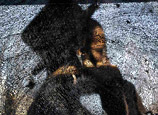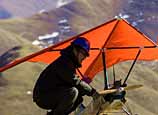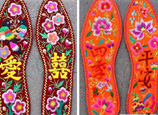
According to numerous historical references including Shiji, or Records of the Grand Historian, Wu's capital was located around Suzhou during the state's final years. Historians have long speculated it was buried under Suzhou's downtown, but the discovery of an ancient city at Mudu has stirred a new idea. The city excavation was thus listed on the country's 10 biggest archaeological findings in 2011.
"We found their tiles and some delicately designed wooden construction components, for the first time around the Yangtze Delta," says Tang Jinqiong, an archaeologist on the panel from CASS, who explains tiles excavated in the Yangtze River Delta are usually no more recent than the Han Dynasty (206 BC-AD 220).
Tang adds that some sections of city walls were piled up, which is uncommon among contemporaneous constructions that usually used a ramming method. Some other unique building styles also have been detected on the walls.
"It's not exaggerating to suppose this is the highest-level city of a state at that time. Nevertheless, we so far can only say it is a relic of the late Spring and Autumn Period that has the obvious characteristics and size of a capital city. We need further proof to say whether it is the Wu capital."
In recent years, several other sites in southern Jiangsu province were suspected to be that capital, but the evidence was thin.
"The discovery of the Mudu ancient city has established a home for all the tombs and cultural relics surrounding Suzhou," says Song Jian, chief of archaeological division of Shanghai Museum. "The evidence bring legend into reality. The general public will thus have the chance to know a more vivid history of Wu and Yue."
Chen says his Suzhou Archaeological Institute plans to publish a popular book based on the findings. A historical park has also been conceived to better inform the public, but the plan is still under wraps to avoid any possible harm brought by swarming visitors.
Chen says the next steps in the excavation will begin in 2013, which will try to define the outline of the ancient city and the connection between the city and surrounding cultural relics.
"Archaeologists have concentrated so much energy on exploring the value of ancient tombs in this area," he says, suggesting the Mudu discovery may change the approach of future studies.
"But this is an important trial, processing the interdisciplinary study on a cultural cluster as a whole," Chen says. "The job will take a long time."















 Landmark building should respect the public's feeling
Landmark building should respect the public's feeling


![]()
